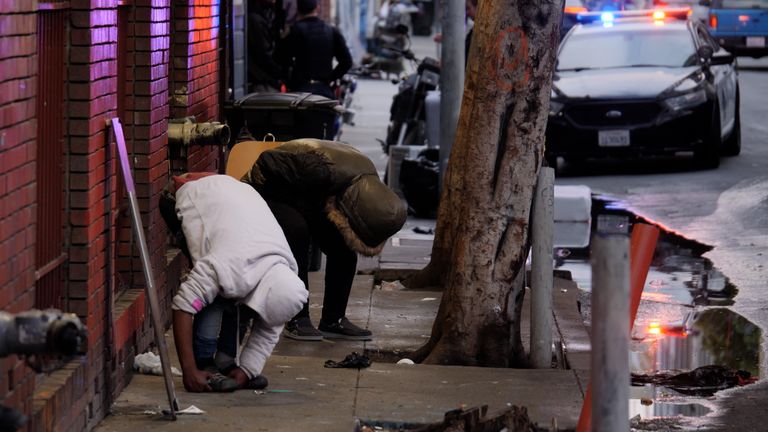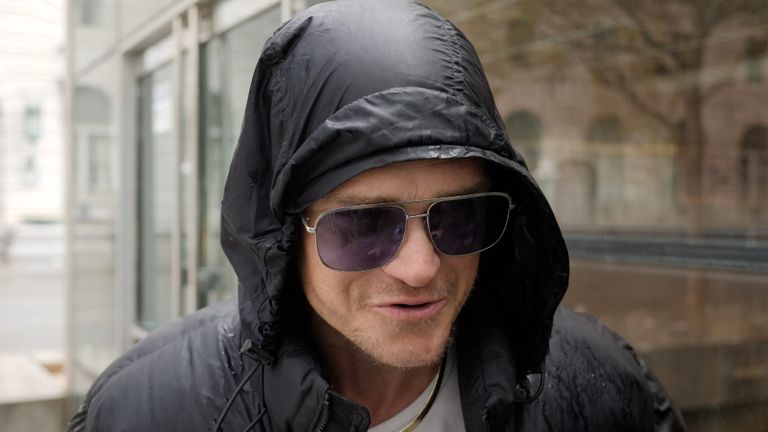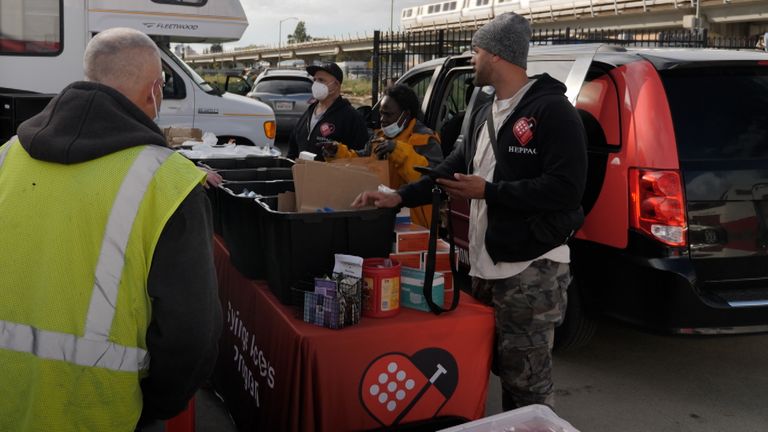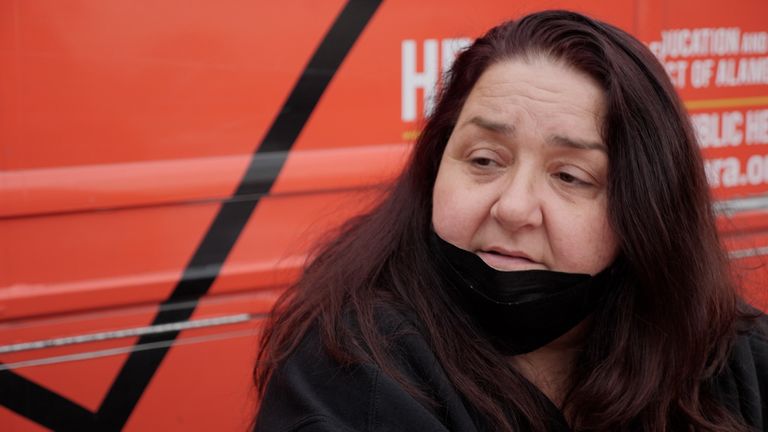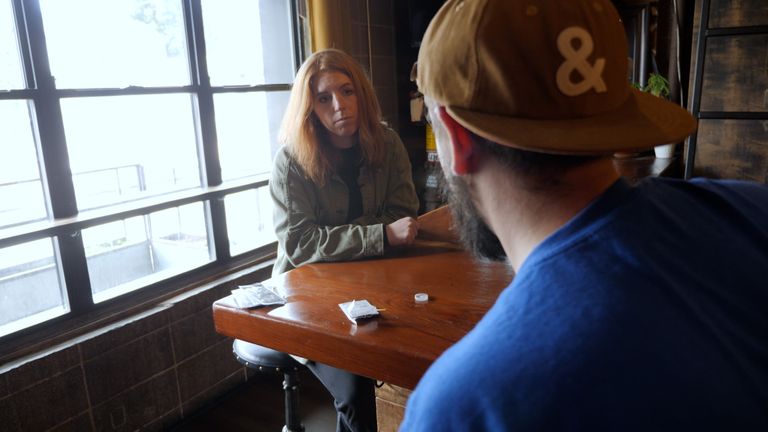Bodies are strewn on the doorstep of San Francisco’s main government building, contorted by the effects of fentanyl, a painkiller 100 times more potent than morphine.
We’re two streets away from the headquarters of Twitter, in a city district with more billionaires than anywhere on Earth, but this has become an open-air drug market.
Trevor Pearson has been addicted to opiates for 10 years, first heroin and now fentanyl. He wants everyone to know of the devastation.
At 7pm on Wednesday Sky News will air Fighting Fentanyl – a special programme with eyewitness reports from Mexico, Texas and California on the drug cartels making and selling the deadly drug
“The fact that this isn’t a main issue, on TV every night, is insane to us,” he says.
“I’ve never seen anything like it. There are regular people, square Joes on their way to work and they’ll stop and hang out with me, try this drug for the first time, and then leave their life literally from that moment on, they’re just out here with us.”
I ask Trevor what fentanyl is doing to the streets of one of America’s great and historic cities.
“It’s turned your average users into desperate, violent people who will do anything to get our next fix,” he says.
“It’s a tragedy. There are these million dollar neighbourhoods with people nodding out outside their front door. I can’t even imagine how that would feel to work your whole lives, be able to buy a home like that and then have it end up in that state.”
This is an all-encompassing tragedy. Drug-related deaths surged by 41% in San Francisco in the first three months of this year – with an average of one person dying of an accidental overdose here every 10 hours. The drug-ravaged Tenderloin district is worst affected.
“It’s classified as a disease now, medically,” Trevor says, “and the insurance companies consider it a disease”.
“So, why is there so much stigma still attached to it socially? People don’t ask to be drug addicts. They may make poor decisions, but you wouldn’t yell at a person with diabetes for having blood sugar issues.”
As we’re talking, a private security guard interrupts us, asking Trevor’s friends, who are using behind him, to move out of view of a children’s nursery.
Around the corner, police are putting a suspected dealer in handcuffs.
This week, California governor Gavin Newsom said he was sending in the National Guard as part of a crackdown on the trafficking of fentanyl.
This is a city divided on how to combat the fentanyl crisis. Some want the streets swept clean, others favour a more compassionate, health-based approach.
The latter is the view of Heppac, an education and prevention programme. Every Tuesday, members of their team are based beneath an overpass, next to a homeless encampment in Oakland, a city just over the bridge from San Francisco.
People from their early 20s to their late 70s queue up for help with getting clean or staying as safe as possible while using.
Staff stand behind a bank of plastic desks, handing out clean syringes, wound care kits and Narcan, an overdose reversal treatment. People put their supplies in brown paper bags.
“I don’t like to get involved with the political questions,” says Sabrina Fuentes, a community health promoter.
“I just want to get this to that person that’s on the street that’s dying,” she adds picking up a Narcan spray.
“A lot of times I just have conversations with them. They sit down, we talk about mothers, children, family. I get to know them and I get to have a relationship with them and then they die and it’s heartbreaking.”
Read more:
Inside a secret fentanyl lab: Deadly chemicals, cartel kingpins and gunshot wounds
What is fentanyl? The drug that killed rapper Coolio
Across San Francisco, bars are stocked with simple testing strips, often supplied by the charity Fent Check. They allow drug users to check that their cocaine, or other substance, is not contaminated with fentanyl.
Jeff, a former drug dealer, says he helps one of the largest Mexican street gangs operating in the area test their drugs before they reach the street.
“No drug dealer deliberately wants to give fentanyl instead of cocaine,” he says.
“If customers start to notice that people are dying from a batch of cocaine and that the autopsy results are showing that it’s because of an opioid overdose, no one’s buying that cocaine anymore. It just doesn’t make financial sense to kill your customer base.”
